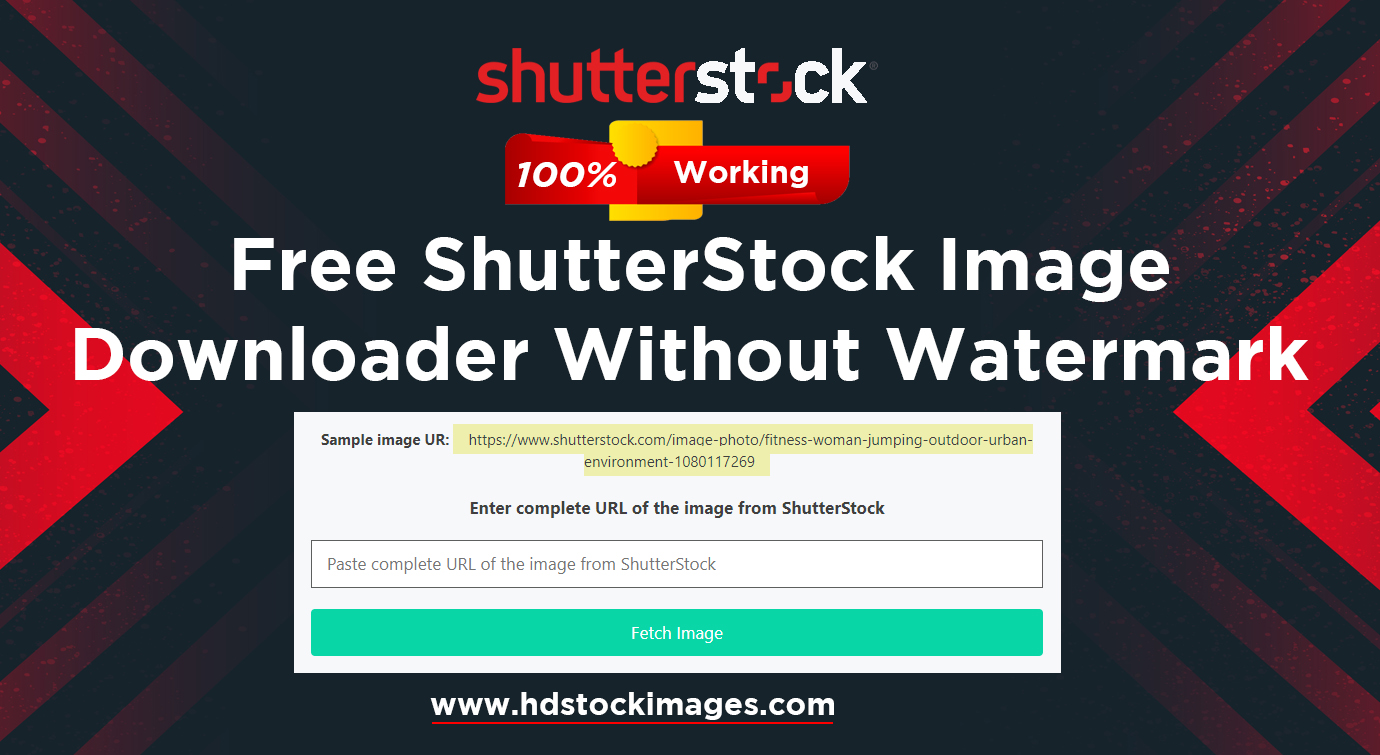If you’re into creating eye-catching designs, blogs, or social media content, you’ve probably heard of Shutterstock — one of the biggest names in stock photography. It offers millions of high-quality images, illustrations, and videos for a fee, but let’s be honest: paying for each download can add up quickly! Luckily, there are ways to access Shutterstock images for free, especially if you know where to look and how to do it responsibly. In this post, we’ll explore some legit options to get
Understanding Shutterstock’s Licensing and Usage Policies

Before you start downloading, it’s crucial to understand Shutterstock’s licensing system. Shutterstock offers two main types of licenses:
- Standard License: Suitable for most uses like websites, blogs, presentations, and social media. It allows you to use images in digital formats but often limits the number of copies or views.
- Enhanced License: Necessary if you plan to use images for products for resale, large-scale prints, or merchandise. It provides broader rights and fewer restrictions.
Now, here’s the key point: Shutterstock’s images are copyrighted, meaning they’re protected by law. Using images without proper licensing can lead to serious legal issues, including fines or lawsuits. That’s why it’s vital to use images legally and ethically. While there are some free resources and methods to access Shutterstock images, they often come with specific rules:
- Official Free Downloads: Shutterstock occasionally offers free images through promotions or their free section. These are safe to use but limited in number and scope.
- Free Trial Accounts: Shutterstock sometimes provides free trial periods where you can download a limited number of images for free. Remember to cancel before the trial ends if you don’t want to be charged.
- Third-party Websites: Some sites claim to offer free Shutterstock images, but beware! Downloading from unofficial sources can risk copyright infringement or malware.
In summary, always ensure you understand the licensing terms before using Shutterstock images. The safest route is to use official channels or opt for images explicitly marked as free. This way, you respect creators’ rights and avoid potential legal troubles down the line.
Legal Ways to Access Free Shutterstock Images in 2018

If you’re looking to grab some high-quality images without breaking the bank, you’re probably wondering how to do it legally. Shutterstock is known for its vast library of stunning visuals, but most of them are behind a paywall. Luckily, there are some legitimate ways to access Shutterstock images for free in 2018, without risking copyright issues or violating terms of service.
1. Shutterstock’s Free Trial
One of the best ways to access images legally is by taking advantage of Shutterstock’s free trial offers. Typically, Shutterstock provides a free trial period (like 30 days) during which you can download a certain number of images for free. This is perfect if you need a few high-quality images for a project and want to do so legally.
2. Shutterstock’s Free Image Collection
From time to time, Shutterstock releases collections of free images for promotional purposes or special events. These images are available for download directly from their website without any charges. Keep an eye on their blog or promotions page to stay updated on these offers.
3. Creative Commons and Public Domain Resources
While not directly from Shutterstock, some images uploaded by photographers under Creative Commons licenses or into the public domain can be used freely. Websites like Unsplash, Pexels, and Pixabay are great sources of free-to-use images, and Shutterstock sometimes features or promotes such content. Always double-check licensing to ensure you’re compliant.
4. Participating in Shutterstock Contests or Promotions
Occasionally, Shutterstock runs contests or promotional campaigns where participants can win free credits or subscriptions. Engaging in these activities can give you opportunities to access free images legally, plus you might discover new creative tools or resources along the way.
Remember, always respect licensing agreements and attribution requirements. Using images without proper permissions can lead to legal trouble, so stick to these legitimate options to ensure you’re on the right side of copyright law.
Using Shutterstock’s Free Trial and Promotions Effectively
If you want to maximize your chances of downloading free Shutterstock images, understanding how to use their free trial and promotional offers strategically is key. Here are some tips to help you get the most out of these opportunities in 2018:
- Sign Up Early and Keep Track:
Register for the free trial as soon as you find an offer. Keep track of the trial period dates so you can plan your downloads accordingly. Remember, most free trials last around 30 days, so time management is essential. - Plan Your Downloads:
Before starting the trial, make a list of the images you need. This ensures you use your download credits efficiently and don’t waste time or opportunities on images that aren’t essential. - Use Download Limits Wisely:
Shutterstock typically limits the number of images you can download during the free trial. Focus on high-quality, versatile images that can be used multiple times or in various projects. - Leverage Promotional Offers:
Keep an eye on their website and newsletters for special promotions, like discounted bundles or bonus credits. Sometimes, Shutterstock offers extended free trials or added bonuses during holidays or special events.
Pro Tip: Always read the terms and conditions of each offer. Some free trials may require you to enter payment details upfront, and if you forget to cancel before the trial ends, you might be charged. To avoid surprise charges, set reminders and cancel if you don’t want to continue with a paid plan.
In summary, using Shutterstock’s free trial and promotional offers effectively can be a game-changer for your projects. With a bit of planning and attention to detail, you can legally access premium images for free in 2018, boosting your creative work without stretching your budget.
Alternative Websites for Free Stock Images Similar to Shutterstock
If you’re on the hunt for high-quality images but want to avoid the costs associated with Shutterstock, don’t worry—you’re not out of luck. There are plenty of fantastic websites offering free stock images that can match your project needs without breaking the bank. Here are some top contenders:
- Pexels — Known for its vast library of free, high-resolution photos contributed by talented photographers worldwide. Whether you need nature shots, tech images, or lifestyle photos, Pexels has you covered.
- Unsplash — A favorite among designers and creatives, Unsplash offers a curated collection of stunning images that are free to use for commercial and personal projects. The photos often have a very artistic and professional feel.
- Pixabay — Not just a source for photos, Pixabay also offers illustrations, vectors, and videos. Its extensive database makes it easy to find just the right visual for your project.
- FreeImages — This platform provides a wide selection of free images, categorized for easy browsing. Keep an eye on the licensing details, as some images may have restrictions.
- Kaboompics — Specializes in lifestyle and interior design photos, perfect if you’re working on projects related to fashion, home decor, or travel.
While these sites are free, it’s always good practice to check the licensing terms for each image—most are free for commercial use without attribution, but it’s wise to double-check. Using these platforms can be a game-changer, especially when you’re working on tight deadlines or just want to add a professional touch to your visuals without spending a dime.
Tips for Finding High-Quality Free Images for Your Projects
Searching for the perfect image can sometimes feel overwhelming, especially with so many options out there. Here are some practical tips to help you find high-quality, free images that will elevate your projects:
- Use Specific Search Terms — Instead of vague keywords like “nature,” try more descriptive phrases like “sunset over mountains” or “city skyline at night.” This narrows down results and helps you find exactly what you need.
- Filter by Resolution and Size — High-resolution images look better and more professional. Most stock sites allow you to filter results by size, so always select the highest available quality for print or detailed digital use.
- Check Licensing Carefully — Even on free sites, some images require attribution or have restrictions on commercial use. Always read the licensing info before downloading and using an image, to avoid any legal issues.
- Look for Authentic and Natural Shots — Stock photos are often criticized for looking staged. Search for images that look authentic and candid; these tend to resonate more with viewers.
- Use Image Editing Tools — Sometimes, a little cropping, color correction, or overlay can make an image fit your project perfectly. Don’t hesitate to tweak images to match your style.
- Save Collections or Favorites — As you browse, create collections or save your favorite images. This saves time later and helps you compare options before making a final choice.
- Stay Updated with New Uploads — Many free image sites regularly add new photos. Check back often or subscribe to updates so you don’t miss fresh content that might be perfect for your project.
By following these tips, you’ll be better equipped to find images that not only look great but also align perfectly with your project’s message and style. Remember, the right image can make all the difference in capturing attention and conveying your story effectively.
Risks and Ethical Considerations When Downloading Images for Free
Let’s be real — while the idea of snagging Shutterstock images for free may sound tempting, it’s important to understand the potential risks and ethical issues involved. Using images without proper authorization can lead to serious consequences, both legally and morally.
First off, legal risks are the biggest concern. Shutterstock images are copyrighted, meaning they’re protected by intellectual property laws. Downloading or using these images without paying or without the proper license can result in lawsuits, fines, or other legal trouble. It’s not worth risking your reputation or finances over a quick download.
Beyond legal issues, there’s also the ethical side. Creators and photographers put a lot of time, effort, and talent into making those images. Using them without permission can be considered theft of intellectual property. Respecting artists’ work supports a healthy creative community and encourages more high-quality content to be produced.
Another point to consider is quality and safety. Free downloads from unofficial sources might be low quality or, worse, contain malware or viruses. These can harm your device or compromise your personal data. Always be cautious about where you get images from, and steer clear of sketchy sites that promise free downloads that seem too good to be true.
Finally, using images improperly — like for commercial projects without proper licensing — can lead to copyright infringements. Shutterstock’s licensing terms are there to protect both the creators and users. Ignoring these terms can result in legal action, damage to your reputation, and even financial penalties.
So, what’s the takeaway? Always respect copyright laws and consider the ethical implications of your choices. If you truly need images for free, look for legitimate free image sources or consider creating your own. Remember, supporting creators is the right thing to do, and it keeps your projects safe and professional.
Conclusion and Best Practices for Using Shutterstock Images Responsibly
In the world of digital content, images are a powerful tool to grab attention and convey your message. Shutterstock offers a treasure trove of high-quality images, but it’s crucial to use them responsibly to stay on the right side of the law and to support the creative community.
Here are some best practices to keep in mind when working with Shutterstock images:
- Always obtain the proper license. Whether you’re using images for personal projects or commercial purposes, make sure you have the right license. This not only protects you legally but also ensures you’re respecting the work of photographers and artists.
- Use images ethically. Avoid manipulating or misrepresenting images in ways that could harm the subjects or mislead your audience.
- Credit creators when appropriate. While Shutterstock’s licenses often don’t require attribution, giving credit when possible is a good practice and shows respect for the artist’s work.
- Manage your downloads carefully. Keep track of which images you’ve licensed and downloaded to avoid accidental reuse or licensing issues.
- Stay updated on licensing policies. Shutterstock’s terms can change, so regularly review the licensing agreements to ensure compliance.
And if you’re ever unsure about how to use an image, don’t hesitate to seek clarification from Shutterstock or consult with a legal expert. Using images responsibly not only keeps you out of trouble but also supports the talented creators behind those visuals.
Remember, the goal is to create compelling content while respecting the rights of others. When in doubt, opt for royalty-free images, create your own, or use reputable free image sites. Doing so will help you build a trustworthy brand and foster positive relationships in the creative community.


